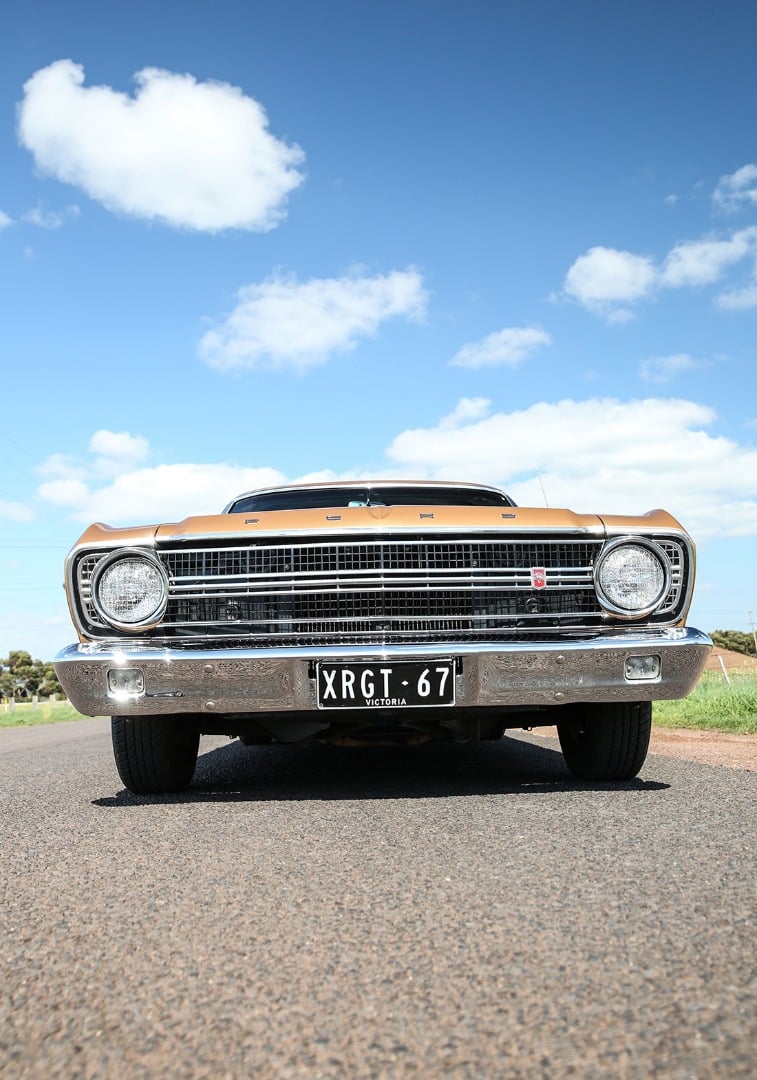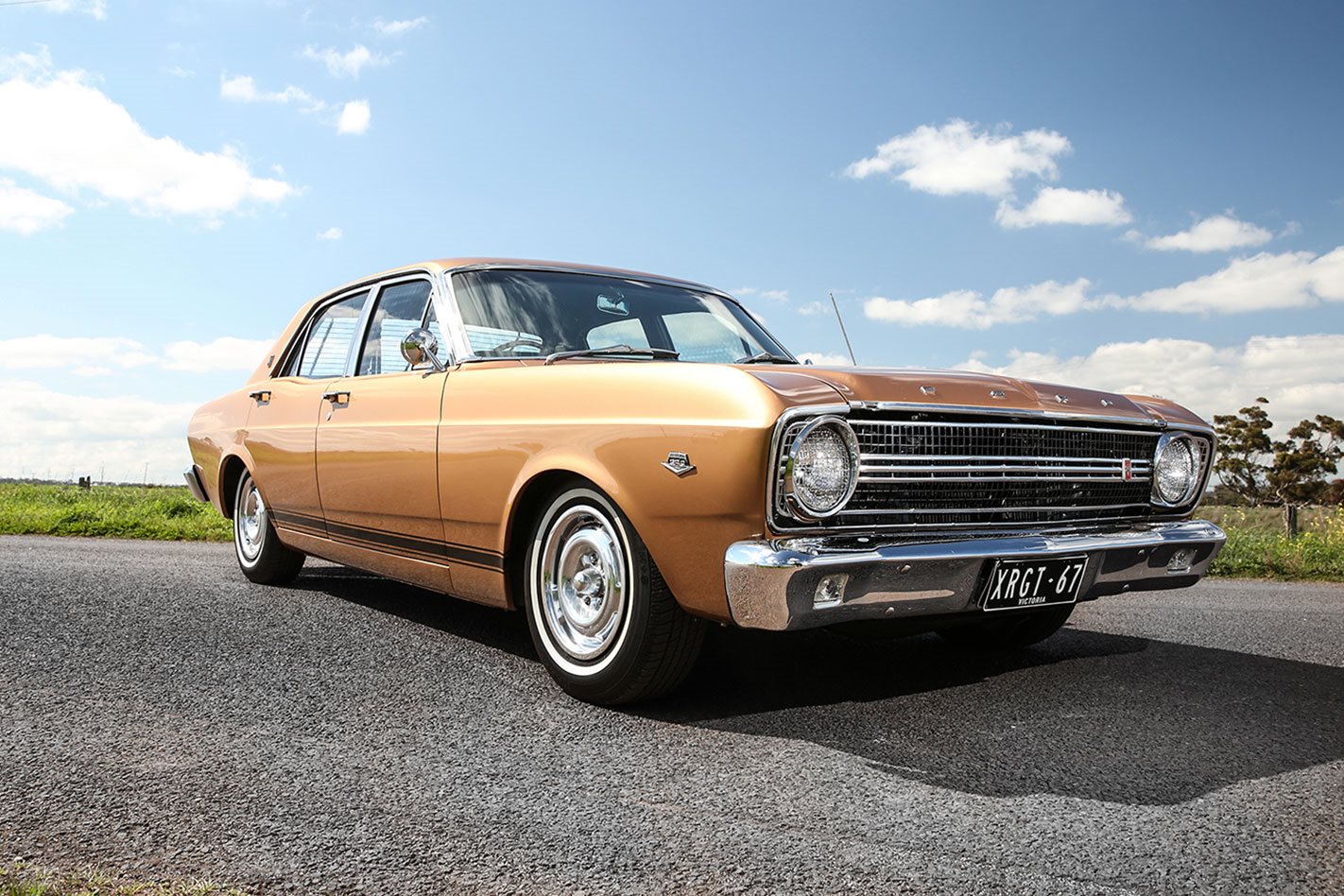It was in April 1967 that Ford dealers around the country, basking in the runaway sales success of the new-generation XR Falcon launched nine months earlier, learned of something even better than the XR’s optional V8. While that engine configuration was already an Aussie-made first, the Blue Oval was announcing a performance-tuned V8, to be badged the Falcon GT and aimed squarely at recovering the company’s honour at Mt Panorama, Bathurst.
Ford’s four-cylinder Cortina had taken a Bathurst hat-trick from 1963-’65, but had been ineligible for ’66. Thus, the introduction of the Geelong-built, 4.7-litre (289ci) V8 engine – plus performance-mad, ex-Ford Canada marketing man, Bill Bourke – brought the stars into line for the birth of the Australian muscle car.

The platform was the XR Falcon Deluxe manual which, fitted with a standard 149kW V8, had been developed by Ford’s Don Dunoon and racer Harry Firth into a tighter-handling Police pack. Rumour has it that Firth’s relationship with the Highway Patrol boys came in handy when the Bathurst-bound GTs needed high-speed road running.
Indeed, the NSW and Victorian police forces were early and eager customers for the new GT. Its (almost) exclusive ‘GT Gold’ colour was owed to the Gallaher Group, who were the official ciggie sponsor of the Bathurst race. The low-fuss exterior styling comprised a black-barred grille, body side stripes and stainless wheel trims covering 14×5.5-inch steelies.
Engine power was raised by almost 13 percent and mated to a four-speed manual with revised ratios. The coil front and live-axle rear suspension copped heavier springs and a thicker front anti-roll bar. Faster-geared steering reduced turns lock-to-lock to just four (versus 5.5). Eleven-inch front discs were standard on the GT, with 10-inch drums at the rear.

The handsome and well-equipped GT wasn’t cheap, listing at $3890 versus $2411 for a regular 149kW V8 manual. But the first homologation batch of around 260 cars sold as quickly as Ford could build them. The groundbreaking GT’s status as a legit legend was cemented in October 1967 when the cars of Harry Firth/Fred Gibson and Ian Geoghegan/Leo Geoghegan finished one-two at Bathurst, in a tight outright tussle with a pair of Alfa Romeo 1600 GTVs.
The XR GT’s production total remains the stuff of pub arguments, being either 596 or 684. The long-held former figure is thought to have perhaps excluded police pursuit GTs.
The XR Falcon in numbers
- 302 – Cubic inches; a few late-build XR GTs copped the new, bigger V8 for the successor XT
- 14 – Inch diameter wheels stepping up from the XP’s 13s
- 4000 – Dollars, price cap for Bathurst 500 eligibility
- 125.7 – GT’s top speed (in mph) on Conrod in ’67. A new record

Harry and the four barrel
Ford’s first locally built V8 was based on the 1961-issue, 4.7-litre (289ci) ‘Windsor’ small block. Firth and Dunoon tweaked the stocker’s 149kW to a GT-worthy 168kW and 414Nm, via a four-barrel Autolite carb, higher-comp (9.8:1) head, a hotter camshaft and a new exhaust. The GT managed 0-100km/h in 9.7sec, and a top speed of 195km/h.
Jack and the three-box
The GT’s exterior scheme was done by Jack Telnack, Ford Australia’s 30-year-old chief designer. Local testers gushed over the GT’s standard-spec charcoal vinyl trim, bucket seats, fake wood-rim sports steering wheel, Hurst-style floor shifter, padded dash, Stewart Warner instrumentation and floor-level courtesy lighting.






